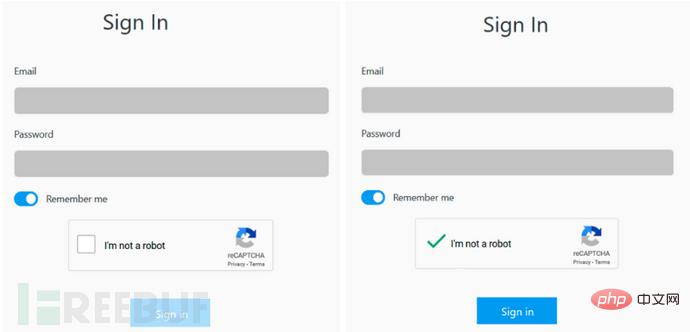How to generate verification code image? GD using php? OK, right. In fact, Zend's Captcha module has been packaged. This article will talk about how to use Zend’s Captcha module.
Environment installation
First of all, Zend’s Captcha needs to install GD. To check whether GD is installed, you need to go to phpinfo() to see if there is a GD module. (Note that it is possible that the module in php -m has gd but the module in phpInfo() does not. This problem means that your PHP and Apache are not installed correctly. Please google for details)
(If you are prompted with Missing Dependency: libt1.so.5 module error during the installation of gd, please read this article: http://www.siutung.org/post/730/)
Generate verification code image
Use Zend_Captcha_Image class
$captcha = new Zend_Captcha_Image();
$captcha->setWordLen('4')
->setHeight('60')
->setFont(NCHANNEL_FONT_DIR . '/ arial.ttf')
->setImgDir(NCHANNEL_CAPTCHA_DIR)
->setDotNoiseLevel('5')
->setLineNoiseLevel('5');
$id = $ captcha->generate();
$code = $captcha->getWord();
1 There are two variables that need to be mentioned here , $id and $code.
The image file name is $id. ".png"; this id is a random number.
$code is the text in this picture, which is the answer to the verification code
2 The setWordLen and other settings interfaces are Zend_Captcha_Image’s settings for verification code images exposed to the outside. In fact, you can know what the function does by looking at its name. Please refer to Zend's API manual for details.
3 The font file must be on the server, and ImgDir is set to the image generation path
Verify the verification code image
Okay, the verification code image is generated, now it is time to verify the verification code.
The verification step requires the use of the Zend_Session_Namespace session storage module.
First of all, when generating the verification code, there are two variables, id and code, that should be saved.
Okay, go back to the previous step and modify the code
$captcha = new Zend_Captcha_Image();
$captcha->setWordLen('4')
->setHeight('60')
->setFont(NCHANNEL_FONT_DIR . '/arial.ttf')
->setImgDir(NCHANNEL_CAPTCHA_DIR)
->setDotNoiseLevel('5')
->setLineNoiseLevel('5');
$id = $captcha->generate( );
$codeSession = new Zend_Session_Namespace('captcha_code_' . $id);
$codeSession->code = $captcha->getWord();
Here we see that we use $captcha_code_$id to store the code. The purpose is to wait until the verification step to use it.
The second step
When passing the form to the page, pass the $id and verification code image.
Let the user fill in the verification code.
The third step is verification.
This step of verification requires the user to provide two parameters: $id and verification code answer $code
$codeSession = new Zend_Session_Namespace('captcha_code_' . $this->_params['id']);
if ($codeSession == null || strtolower($codeSession->code) != strtolower ($this->_params['code'])) {
$this->Output(ERROR);
}
This code reads very Let’s make it easy: If there is a code saved in captcha_code_$id, and the code is consistent with the code filled in by the user, then the verification is successful.
In this way, the verification code verification process is over.
Think deeply
Okay, actually the verification code is not that simple. Here are a few questions worth considering
Verification code images will not be automatically deleted, so the size of the folder where the generated verification code images are located will continue to increase. what to do?
The Image class provides the method $captcha->setGcFreq(5).
Please see the API for specific usage methods
I want to set $id myself, what should I do?
The answer is to encapsulate another layer on Zend_Captche_Image, and then rewrite the generate() method
For example, I rewrote a class:
class Test_Captcha_Image extends Zend_Captcha_Image
{
protected $_fid = "";
public function generate()
{
$word = $this-> _generateWord();
$this->_setWord($word);
if ($this->_fid) {
$id = $this->_fid;
}
$this->_generateImage($id, $this->getWord());
$this->_gc();
; ;
return $this; 🎜>
Then the code to use this class is like this
Copy the code
The code is as follows:
->setDotNoiseLevel('5')
->setLineNoiseLevel('5') ->setId($user_id);
$id = $captcha->generate();
$this->Output(ERROR);
}
PS
Zend’s Captcha encapsulates basic verification code actions. Generating a simple verification code basically does not require looking at the internal code, but if you need to perform more advanced operations on the verification code, such as modifying the display text of the verification code, etc., it is best to take a look at the source code of Captcha. .
http://www.bkjia.com/PHPjc/326861.html
www.bkjia.com
true
http: //www.bkjia.com/PHPjc/326861.html
How to generate a verification code image? GD using php? OK, right. In fact, Zend's Captcha module has been packaged. This article will talk about how to use Zend’s Captcha module. Environment installation...
 如何在技嘉主板上设置键盘启动功能 (技嘉主板启用键盘开机方式)Dec 31, 2023 pm 05:15 PM
如何在技嘉主板上设置键盘启动功能 (技嘉主板启用键盘开机方式)Dec 31, 2023 pm 05:15 PM技嘉的主板怎么设置键盘开机首先,要支持键盘开机,一定是PS2键盘!!设置步骤如下:第一步:开机按Del或者F2进入bios,到bios的Advanced(高级)模式普通主板默认进入主板的EZ(简易)模式,需要按F7切换到高级模式,ROG系列主板默认进入bios的高级模式(我们用简体中文来示范)第二步:选择到——【高级】——【高级电源管理(APM)】第三步:找到选项【由PS2键盘唤醒】第四步:这个选项默认是Disabled(关闭)的,下拉之后可以看到三种不同的设置选择,分别是按【空格键】开机、按组
 CS玩家的首选:推荐的电脑配置Jan 02, 2024 pm 04:26 PM
CS玩家的首选:推荐的电脑配置Jan 02, 2024 pm 04:26 PM1.处理器在选择电脑配置时,处理器是至关重要的组件之一。对于玩CS这样的游戏来说,处理器的性能直接影响游戏的流畅度和反应速度。推荐选择IntelCorei5或i7系列的处理器,因为它们具有强大的多核处理能力和高频率,可以轻松应对CS的高要求。2.显卡显卡是游戏性能的重要因素之一。对于射击游戏如CS而言,显卡的性能直接影响游戏画面的清晰度和流畅度。建议选择NVIDIAGeForceGTX系列或AMDRadeonRX系列的显卡,它们具备出色的图形处理能力和高帧率输出,能够提供更好的游戏体验3.内存电
 广联达软件电脑配置推荐;广联达软件对电脑的配置要求Jan 01, 2024 pm 12:52 PM
广联达软件电脑配置推荐;广联达软件对电脑的配置要求Jan 01, 2024 pm 12:52 PM广联达软件是一家专注于建筑信息化领域的软件公司,其产品被广泛应用于建筑设计、施工、运营等各个环节。由于广联达软件功能复杂、数据量大,对电脑的配置要求较高。本文将从多个方面详细阐述广联达软件的电脑配置推荐,以帮助读者选择适合的电脑配置处理器广联达软件在进行建筑设计、模拟等操作时,需要进行大量的数据计算和处理,因此对处理器的要求较高。推荐选择多核心、高主频的处理器,如英特尔i7系列或AMDRyzen系列。这些处理器具有较强的计算能力和多线程处理能力,能够更好地满足广联达软件的需求。内存内存是影响计算
 主板上的数字音频输出接口-SPDIF OUTJan 14, 2024 pm 04:42 PM
主板上的数字音频输出接口-SPDIF OUTJan 14, 2024 pm 04:42 PM主板上SPDIFOUT连接线序最近我遇到了一个问题,就是关于电线的接线顺序。我上网查了一下,有些资料说1、2、4对应的是out、+5V、接地;而另一些资料则说1、2、4对应的是out、接地、+5V。最好的办法是查看你的主板说明书,如果找不到说明书,你可以使用万用表进行测量。首先找到接地,然后就可以确定其他的接线顺序了。主板vdg怎么接线连接主板的VDG接线时,您需要将VGA连接线的一端插入显示器的VGA接口,另一端插入电脑的显卡VGA接口。请注意,不要将其插入主板的VGA接口。完成连接后,您可以
 如何简单绕过人机身份验证CaptchaMay 11, 2023 pm 05:55 PM
如何简单绕过人机身份验证CaptchaMay 11, 2023 pm 05:55 PM今天分享的Writeup是作者在目标网站漏洞测试中发现的一种简单的人机身份验证(Captcha)绕过方法,利用Chrome开发者工具对目标网站登录页面进行了简单的元素编辑就实现了Captcha绕过。人机身份验证(Captcha)通常会出现在网站的注册、登录和密码重置页面,以下是目标网站在登录页面中布置的Captcha机制。从上图中可以看到,用户只有在勾选了Captcha验证机制的“I‘mnotarobot”之后,登录按钮(Sign-IN)才会启用显示以供用户点击。因此,基于这点,我右键点击了Si
 如何在Zend框架中使用ACL(Access Control List)进行权限控制Jul 29, 2023 am 09:24 AM
如何在Zend框架中使用ACL(Access Control List)进行权限控制Jul 29, 2023 am 09:24 AM如何在Zend框架中使用ACL(AccessControlList)进行权限控制导言:在一个Web应用程序中,权限控制是至关重要的一项功能。它可以确保用户只能访问其有权访问的页面和功能,并防止未经授权的访问。Zend框架提供了一种方便的方法来实现权限控制,即使用ACL(AccessControlList)组件。本文将介绍如何在Zend框架中使用ACL
 请推荐一款性价比较高的1155针CPUJan 14, 2024 pm 01:30 PM
请推荐一款性价比较高的1155针CPUJan 14, 2024 pm 01:30 PM求推荐1155针的cpu哪个最好当前性能最高的1155针CPU是IntelCorei7-3770K。它拥有4个核心和8个线程,基础频率为3.5GHz,并支持TurboBoost2.0技术,最高可达到3.9GHz。此外,它还搭载了8MB的三级缓存,是一款非常出色的处理器LGA1155针最强的CPUIntel酷睿i73770K。LGA1155接口为二三代酷睿处理器所使用的接口类型,性能最好的为Intel酷睿i73770K,这款处理器参数如下:1.适用类型:台式机;2.CPU系列:酷睿i7;3.CPU
 我准备去西藏旅行背包去①背多少升的包合适把你认为最好的配置说下本人170体力不错第一次Jan 07, 2024 am 10:06 AM
我准备去西藏旅行背包去①背多少升的包合适把你认为最好的配置说下本人170体力不错第一次Jan 07, 2024 am 10:06 AM我准备去西藏旅行背包去①背多少升的包合适把你认为最好的配置说下本人170体力不错第一次去徒步多就60升或以上的徒步少就60升以下的全程都坐车就不用背包,旅行箱更方便,真要随身带东西,弄个25~40升的就绰绰有馀西藏旅游必备用品:太阳镜、太阳帽、防晒霜、护肤霜、润唇膏、长袖上衣、毛衣;对于特殊旅游或去阿里、藏北、川藏线旅游,建议带:睡袋(防寒)、床单(防脏)、羽绒服、旅游鞋或登山鞋、拖鞋、牙刷、牙膏、毛巾、卷筒纸、纸内裤、消毒湿巾、手电筒、防水火柴、刀具、绳子。前运包能装电脑吗能装电脑,有些背包有


Hot AI Tools

Undresser.AI Undress
AI-powered app for creating realistic nude photos

AI Clothes Remover
Online AI tool for removing clothes from photos.

Undress AI Tool
Undress images for free

Clothoff.io
AI clothes remover

AI Hentai Generator
Generate AI Hentai for free.

Hot Article

Hot Tools

SublimeText3 Mac version
God-level code editing software (SublimeText3)

SAP NetWeaver Server Adapter for Eclipse
Integrate Eclipse with SAP NetWeaver application server.

Atom editor mac version download
The most popular open source editor

mPDF
mPDF is a PHP library that can generate PDF files from UTF-8 encoded HTML. The original author, Ian Back, wrote mPDF to output PDF files "on the fly" from his website and handle different languages. It is slower than original scripts like HTML2FPDF and produces larger files when using Unicode fonts, but supports CSS styles etc. and has a lot of enhancements. Supports almost all languages, including RTL (Arabic and Hebrew) and CJK (Chinese, Japanese and Korean). Supports nested block-level elements (such as P, DIV),

SecLists
SecLists is the ultimate security tester's companion. It is a collection of various types of lists that are frequently used during security assessments, all in one place. SecLists helps make security testing more efficient and productive by conveniently providing all the lists a security tester might need. List types include usernames, passwords, URLs, fuzzing payloads, sensitive data patterns, web shells, and more. The tester can simply pull this repository onto a new test machine and he will have access to every type of list he needs.






